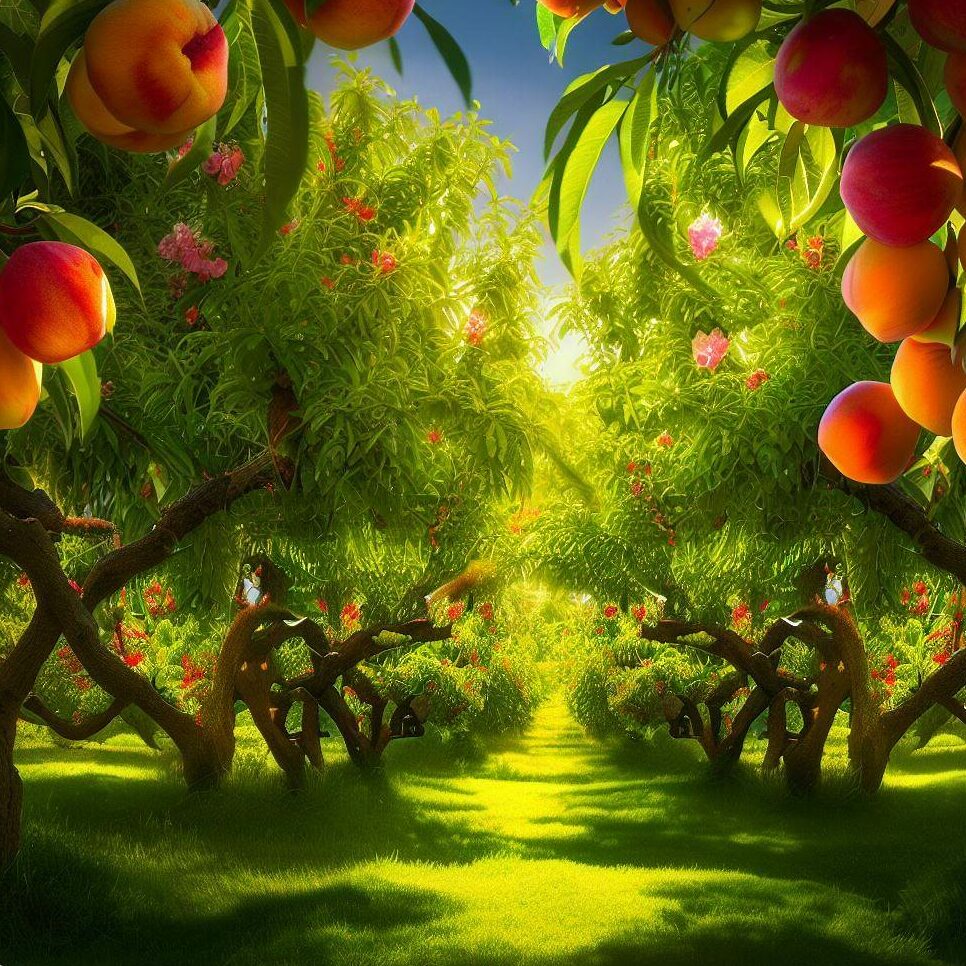Understanding what not to plant near fruit trees is important for maintaining the health and productivity of your orchard. While there are many good fruit tree companions, certain plants can compete for nutrients, attract harmful pests, or even release chemicals that inhibit the growth of fruit trees. Here are some plants that are generally considered bad companions for fruit trees:
- Walnut Trees: Walnut trees, especially black walnut trees, are notorious for a phenomenon known as allelopathy. They release a chemical called juglone into the soil, which can inhibit the growth and even kill certain plants. Fruit trees, including apple, peach, and pear trees, are sensitive to juglone. Therefore, it’s best to avoid planting these fruit trees near walnut trees.
- Grass: While it might seem harmless, grass can be a poor companion for fruit trees. Grass roots compete fiercely with tree roots for water and nutrients, which can stress the trees and reduce their productivity. Additionally, mowing grass around fruit trees can risk damaging the tree trunks. Instead of grass, consider using a ground cover that doesn’t compete as much with the tree, such as clover or wood chips.
- Nightshade Family: The nightshade family, which includes tomatoes, potatoes, peppers, and eggplants, are susceptible to a range of pests and diseases, some of which can also affect fruit trees. To reduce the risk of these issues, it’s best to avoid planting these vegetables near your fruit trees.
- Conifers: Coniferous trees, like pines and firs, have extensive root systems that can compete with fruit trees for water and nutrients. They also tend to acidify the soil, which can be detrimental to fruit trees that prefer neutral to slightly acidic soil.
- Carrots: Carrots, and other root vegetables, can compete with fruit trees for nutrients and water in the soil. This competition can stunt the growth of both the carrots and the fruit trees.

Specific Fruit Tree Questions
What should you not plant near an apple tree?
In addition to the plants mentioned above, you should avoid planting apple trees near members of the rose family. This includes plants like hawthorn and quince, which can transmit diseases to apple trees.
What not to plant near peach trees?
Peach trees are particularly sensitive to juglone, the chemical released by walnut trees. Therefore, avoid planting peach trees near walnut trees. Also, avoid planting peach trees near other stone fruit trees, like cherries and plums, that can share diseases.
Can you plant apples and peaches together?
Apples and peaches share similar growing requirements, but they can also encounter some of the same diseases. If one gets sick, it could potentially spread to the other. It’s generally safer to give each type of fruit tree its own space.
Do apple trees need to be planted close together?
While apple trees do need another apple tree or a crabapple tree nearby for pollination, they also need plenty of space to grow. A good rule of thumb is to plant standard apple trees about 15-20 feet apart and dwarf varieties about 10-15 feet apart.
What’s the closest you can plant fruit trees?
The closest you can plant fruit trees depends on their size. You can plant dwarf fruit trees as close as 10 feet apart, while larger standard fruit trees may need 20 feet or more of space in between. Always consider the mature size of the tree when planting.
While it’s important to know what not to plant near fruit trees, it’s equally important to know what to plant. Good companions for fruit trees can improve soil health, deter pests, and even improve the flavor and yield of your fruit. Some examples include comfrey, which can bring up nutrients from deep in the soil; nasturtiums, which can deter pests; and flowering plants like bee balm, which can attract pollinators.
